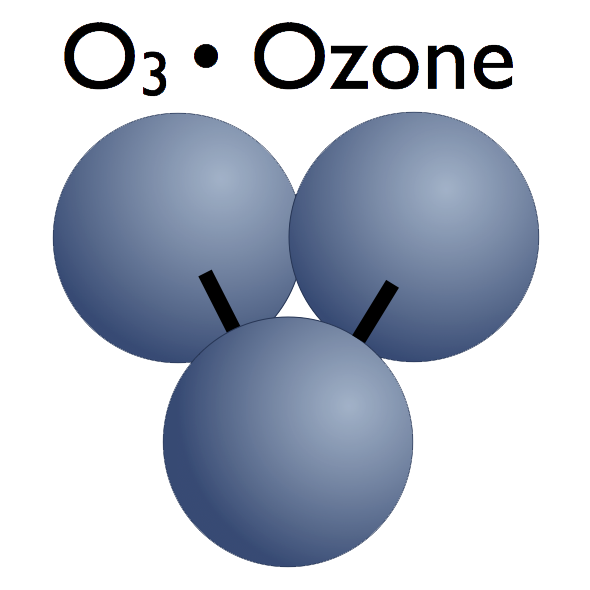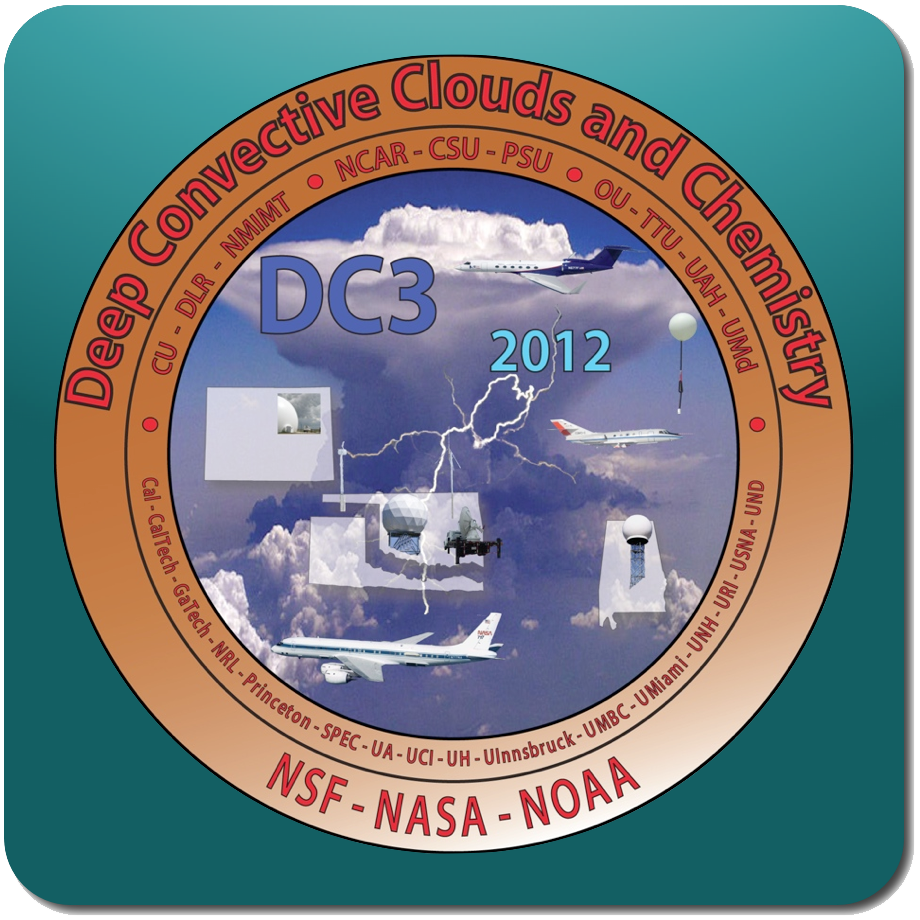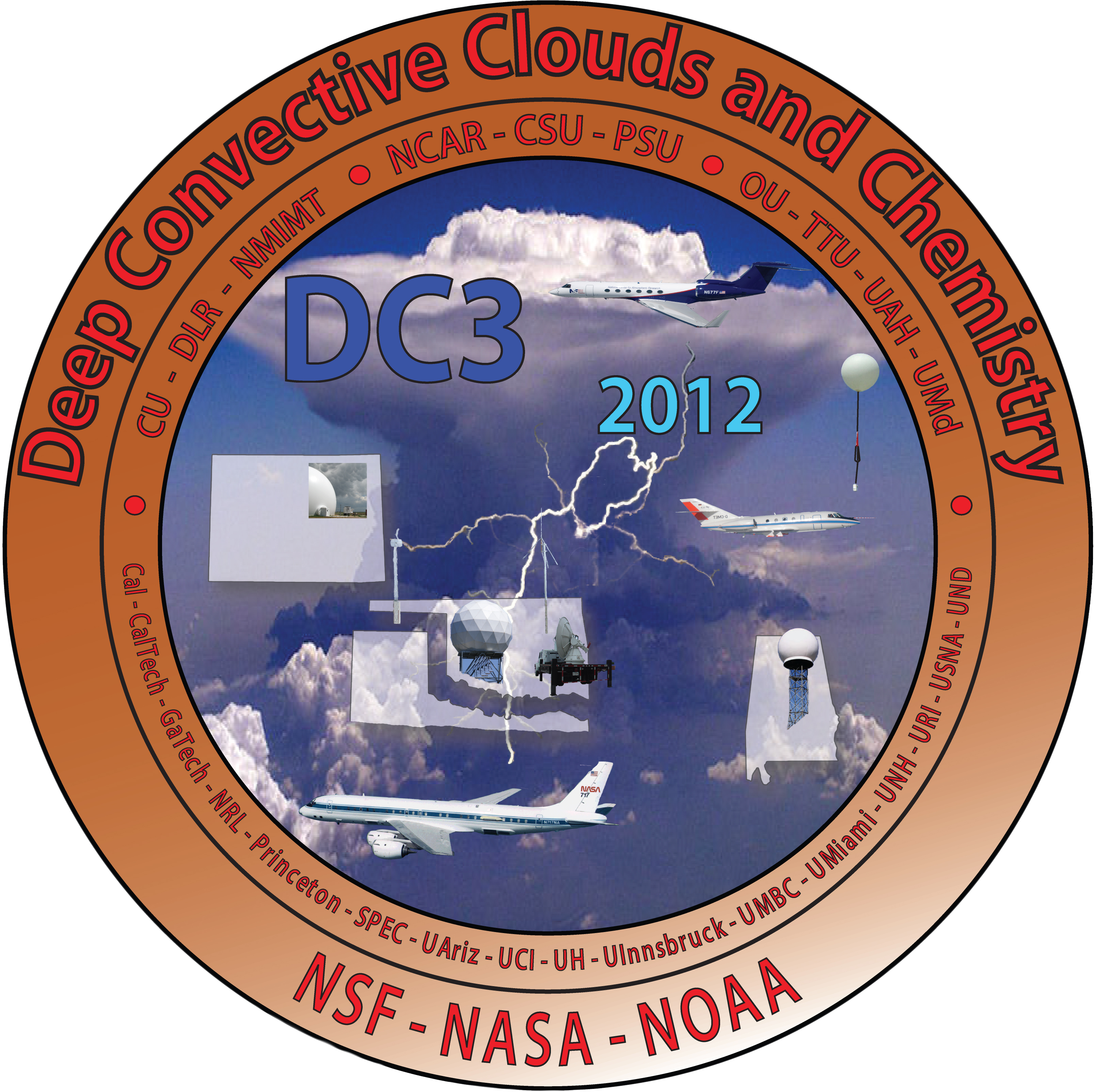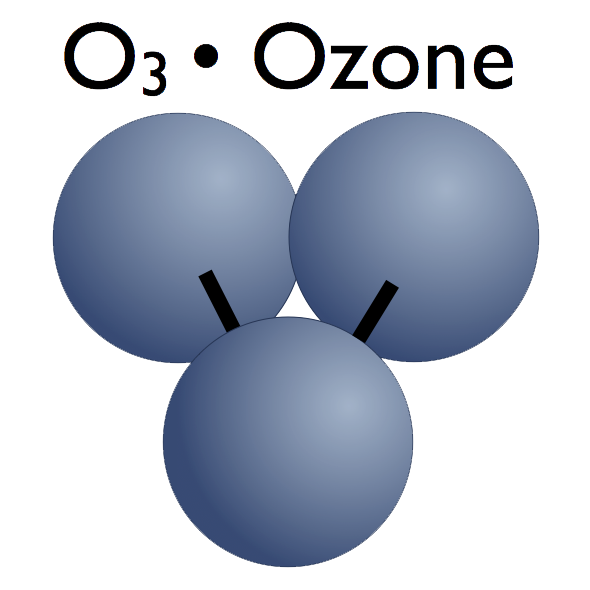Investigating Chemical Transformation & Transportation in the Atmosphere
The Deep Convective Clouds and Chemistry (DC3) field campaign is investigating the impact of large-scale thunderstorms on upper tropospheric composition and chemistry. The DC3 field campaign will make use of extensively instrumented aircraft platforms and ground-based observations.
Follow DC3
|
Salina, Kansas will serve as the base location for the three research aircraft and the project operations center at the Salina Airport, while a network of ground-based radar, lightning antenna stations and instrumentation in Colorado, Oklahoma and Alabama will be used to support DC3 during the project from 15 May - 30 June 2012.
DC3 is motivated by determining the role of thunderstorms on the concentration of ozone in the upper troposphere. The main research goals of the projects are:
- To gain a better understanding of the effects of how deep convection alters the structure and chemistry of the upper-troposphere
and lower stratosphere (UTLS) region, focusing on ozone (03) - To quantify the sources of nitrogen oxides (NOx) and hydrogen oxides (HOx) in the upper troposphere because it is key to understanding the impacts of upper tropospheric ozone on our
climate system
DC3 is proposed to study the impact of continental, midlatitude (~30º-60º N or S of the equator) deep convection on the UTLS composition and chemistry above the continental U.S. during the lifetime of targeted storms and during the period 12-48 hours after active convection.
Decoding a Piece of the Climate Puzzle
 The upper troposphere and lower stratosphere (UTLS) is an important region for Earth-s climate because water vapor, ozone, cirrus clouds and particles in this region strongly contribute to the amount of radiation that is allowed into and out of the Earth-s atmosphere and have direct impact on the climate system.
The upper troposphere and lower stratosphere (UTLS) is an important region for Earth-s climate because water vapor, ozone, cirrus clouds and particles in this region strongly contribute to the amount of radiation that is allowed into and out of the Earth-s atmosphere and have direct impact on the climate system.
Upward movement of hydrogen oxides by means of convection is one of their main methods of traveling from near the Earth's surface to the upper troposphere, and in some cases to the lower stratosphere. Yet the impact of convective transport on the structure and chemistry of the UTLS region has not been fully studied on either the global or continental scale.
Gaining a clearer picture of the amount of nitrogen and hydrogen oxides that are transported as well as created in the UTLS region, and how they interact with the other chemicals is important for understanding climate change. Scientists want to know if there may even be some environmental benefits to the increased amounts of these chemicals. This study of ozone and other heat trapping gases will also aid in developing more effective environmental policies to reduce ground-level emissions that create ozone.
DC3 Chemistry 101

Nitrogen oxides are produced several ways:
- Human processes: fossil fuel combustion in vehicles and power plants
- Natural processes: lightning
Through a series of chemical reactions and interaction with sunlight, ozone is ultimately produced from nitrogen oxides.
The protective ozone layer is located in the stratosphere, where ozone is formed by the interaction of sunlight and naturally occurring oxygen. This layer of ozone is beneficial because it absorbs a large percentage of harmful ultraviolet (UV) light from the sun, affecting how much UV light reaches the Earth's surface.
However, the ozone that is being studied in DC3 is tropospheric ozone which can have both positive and negative effects depending on where it is located. Ozone in the upper troposphere acts as a heat trapping gas, having negative impacts. Ozone in the mid-latitudes of the troposphere are beneficial in that harmful pollutants are destroyed and made into ozone. Ozone at the ground level is a damaging pollutant.
Harmful heat-trapping upper-tropospheric ozone is contributing to climate change. For that reason, quantifying the sources of human-produced gases along with the naturally produced nitrogen oxides from lightning, is key to understanding its impacts on our climate system.
Data Set Documentation Guidelines
Data Submission Instructions
DC3 Data Policy - Final
DC3 Education & Outreach Page
6 Quick Questions
Platforms & Instruments
Science Team
Educational Resources
DC3 In the News
DC3 Blog
DC3 Teacher's Workshop
Outreach Calendar
DC3 EO Summary Report
NCAR ACOM (formerly ACD) DC3 Page
NASA SEAC4RS Project Website
Toolsets for Airborne Data (TAD)
ARM Facilities Website
NASA Lidar Applications Group
Logos
 Follow DC3 on Twitter
Follow DC3 on Twitter







